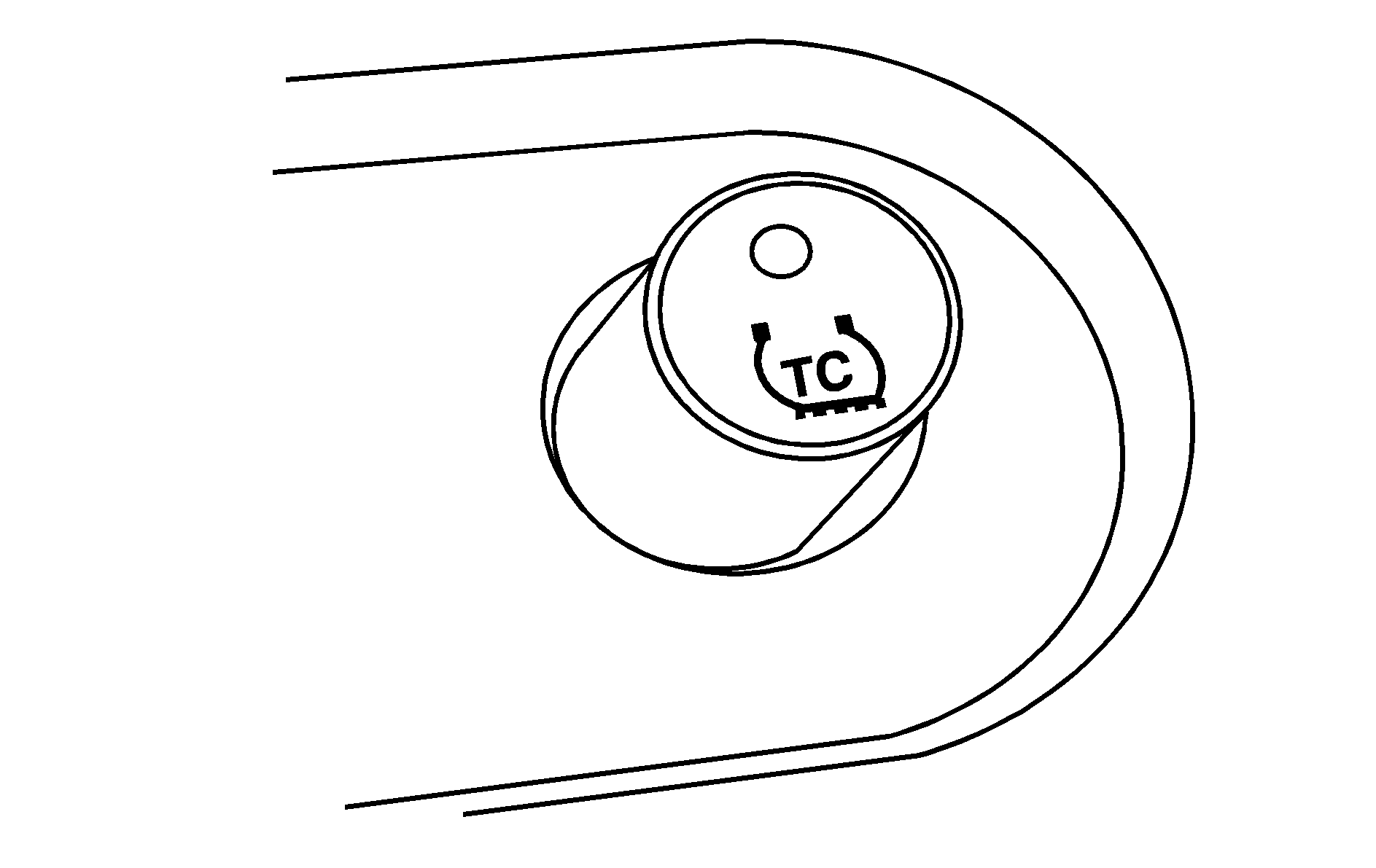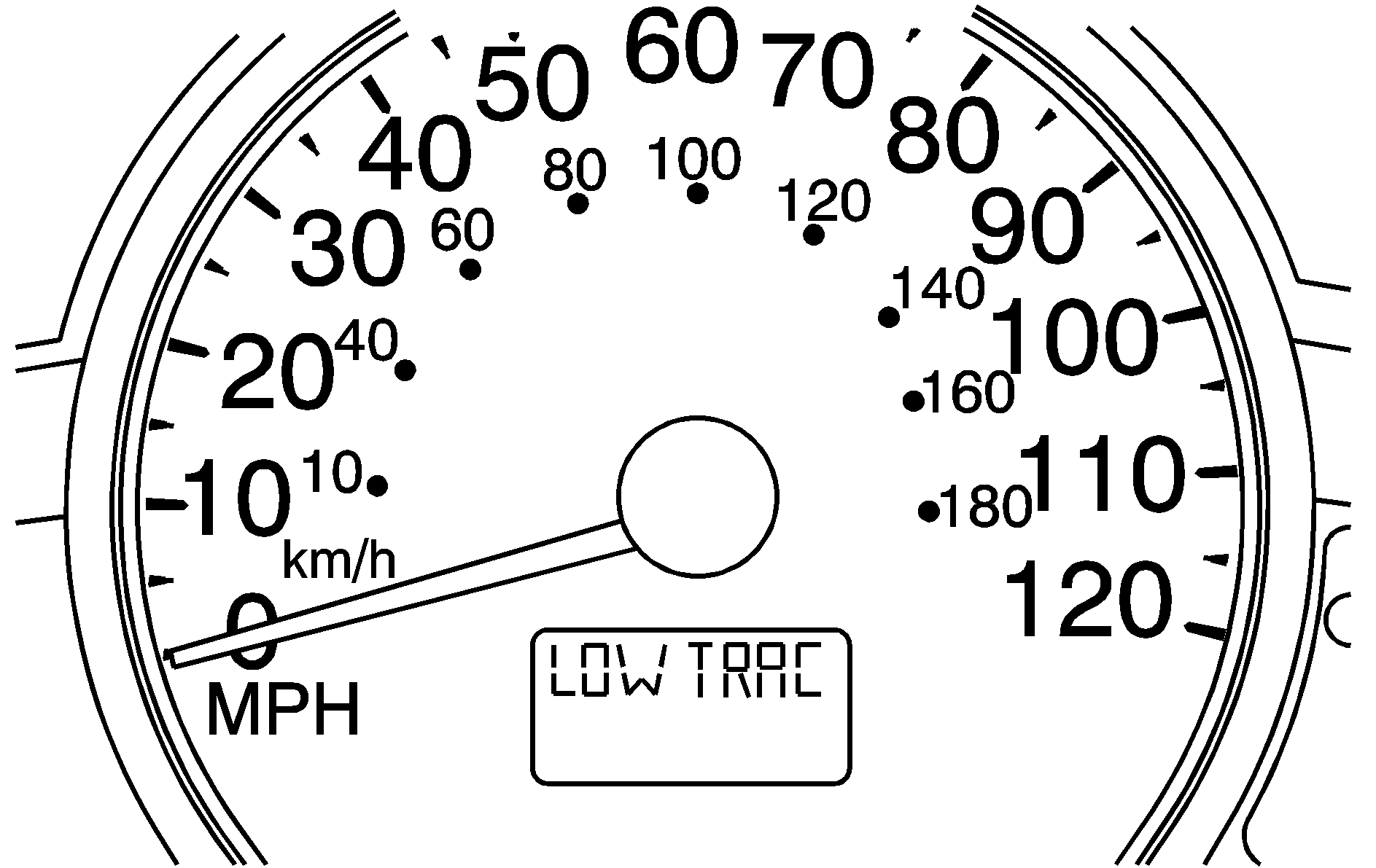
Your vehicle has traction control system if it is equipped with an anti-lock braking system (ABS). The traction control system limits wheel spin and is especially useful in slippery road conditions. The system operates only if it senses that one or both of the front wheels are spinning or beginning to lose traction. When this happens, the system will reduce engine power to limit wheel spin. The system works in both forward and reverse gears and at all speeds.
During a traction control event, "LOW TRAC" will be displayed on the message center.
Vehicles equipped with five-speed automatic transmissions may upshift to limit wheel spin. You may feel the system working or you may notice a loss of power when the system is active, but this is normal.
The light on the traction control button lets you know if your traction control system is on or off. When your vehicle is started, your traction control system is automatically active and the light on the button should be "ON" within a few seconds.
Low TRAC/TRAC OFF Messages
If there is a fault with the ABS that affects the traction control system, the ABS light will illuminate. The message center will display "TRAC OFF" for a few seconds if the system has been turned off. The light on the traction control button will also go off.
If you turn the system off by pressing the Traction Control button, the indicator light on the switch will go off and stay off. The message center will display "TRAC OFF" briefly when the system has been turned off. To turn the system back on, press the button again.
Note: Engaging the parking brake will also turn off the traction control system. If the vehicle is moving when the parking brake is engage, the "TRAC OFF" message will be displayed.
In vehicles equipped with manual transmissions, the Shift Up Indicator light will flash when engine torque has been reduced to a minimum limit to control wheel slip. The flashing light is an indication to the driver to upshift to reduce torque to the wheels. This will optimize traction control performance in very slippery conditions.
When tire chains are installed, your traction control system can be turned off for improved vehicle launch. For increased traction under certain road conditions, such as deep snow or when the vehicle is stuck, you may also want to turn your traction control system off. Turning the traction control system off allows wheel spin which may launch the vehicle more easily (refer to If Your Vehicle is Stuck in Sand, Mud, Ice, or Snow ). If you ever need to use the compact spare, the traction control system can be left on. If your vehicle is in cruise control when the traction control begins to limit wheel spin, the cruise control will automatically disengage. When road conditions allow you to safely use it again, you may re-engage the cruise control.

In vehicles equipped with the traction control system, the "LOW TRAC" message in the message center serves a useful role in providing the driver with an early warning of slippery conditions that may be imperceptible in a vehicle not equipped with traction control. If you have the traction control system, this message will be displayed when the system has detected, and is limiting, wheel spin. Proceed with caution when the "LOW TRAC" message is displayed in the message center (see Traction Control System (TCS) ). The "LOW TRAC" message will be displayed in the message center when the traction control system has been switch off or has been turned off because of a system error.
